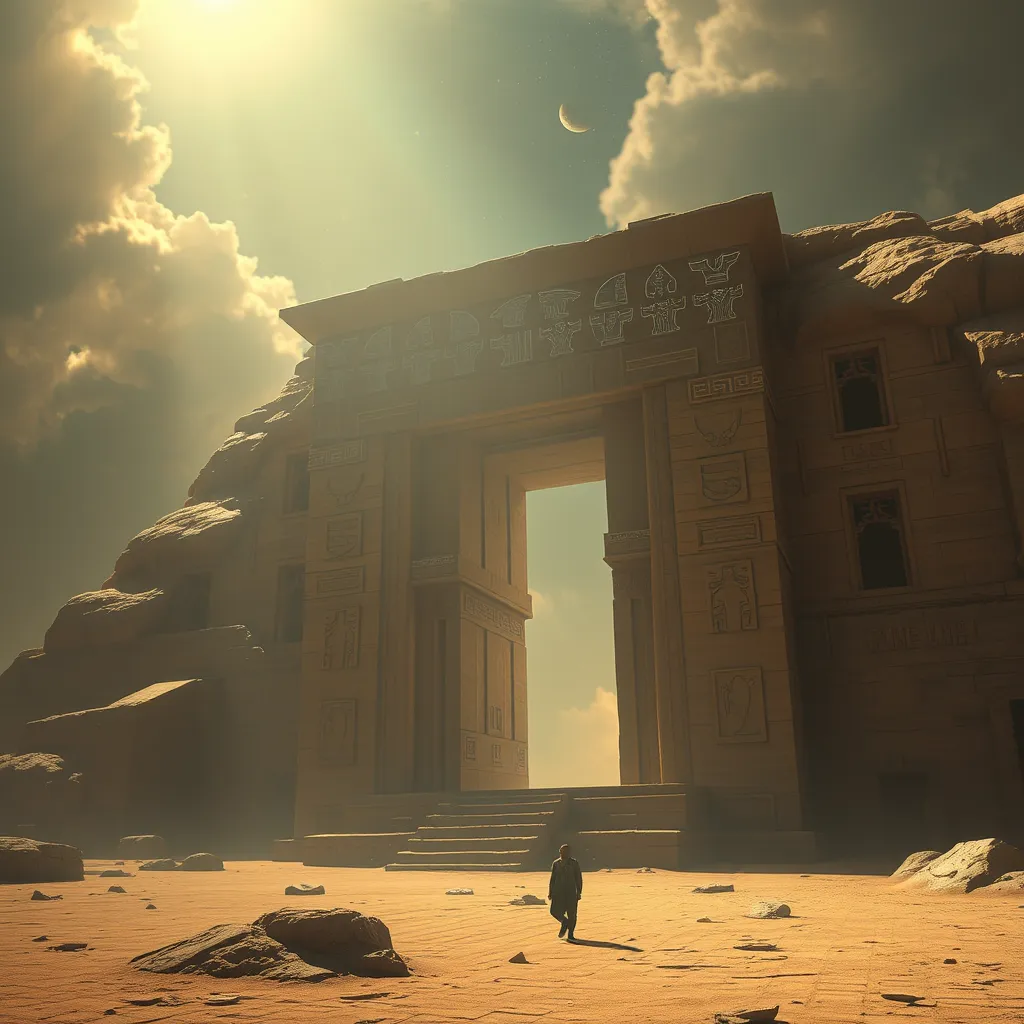The Duat: Beyond the Veil of Reality
I. Introduction to the Duat
The Duat, a significant concept in ancient Egyptian mythology, refers to the realm of the dead, a mysterious and intricate landscape that lies beyond the veil of reality. This otherworldly domain is not merely a destination but a crucial aspect of the Egyptian understanding of life and death. The Duat embodies the journey of the soul after death, encapsulating beliefs about the afterlife and the trials one must face to attain eternal peace.
II. Historical Context of the Duat
The origins of the Duat can be traced back to the early beliefs of ancient Egyptians, where it evolved through the ages, reflecting the changing views of the afterlife. The Duat was often depicted in tomb paintings and inscriptions, serving as a guide for the deceased to navigate their journey in the afterlife.
Key texts, such as the Book of the Dead, provide invaluable insights into the Duat’s significance. This collection of spells and prayers was intended to assist the dead in overcoming obstacles and securing a favorable judgment in the afterlife.
- Origins: Early religious practices and beliefs.
- Evolution: Changes in representation over centuries.
- Key Texts: The Book of the Dead, Pyramid Texts, and Coffin Texts.
III. The Geography of the Duat
The geography of the Duat is as complex as it is symbolic. It is often described as a vast and intricate landscape that includes various realms, each with its own significance and associated deities. The Duat is believed to have areas such as:
- The Field of Reeds: A paradise where the souls of the righteous reside, akin to an idyllic version of the Nile Delta.
- The Hall of Two Truths: A place where the heart of the deceased is weighed against the feather of Ma’at to determine their fate.
- Darkness and Chaos: Areas inhabited by terrifying creatures and malevolent spirits that the deceased must confront.
Each location within the Duat carries symbolic meanings, often reflecting the moral and ethical beliefs of ancient Egyptians. Deities such as Osiris, the god of the afterlife, and Anubis, the god of mummification and the dead, play crucial roles in guiding souls through these landscapes.
IV. The Journey Through the Duat
The journey through the Duat is a perilous and transformative experience for the soul of the deceased. Upon death, the soul embarks on a series of steps that include:
- **The Separation of the Soul:** The soul is divided into its components, such as the Ba (spirit) and Ka (vital essence).
- **The Trials of the Duat:** The deceased must navigate through various challenges, facing fearsome creatures and obstacles.
- **The Heart Weighing Ceremony:** Here, the heart is weighed against the feather of Ma’at, symbolizing truth and justice.
The heart weighing ceremony is of paramount importance, as it determines whether the soul will enter the afterlife or face annihilation. If the heart is lighter than the feather, the soul is deemed worthy and can proceed to the Field of Reeds. Otherwise, it is devoured by Ammit, a fearsome creature that embodies unworthiness.
V. Deities of the Duat
The Duat is populated by numerous deities, each playing a vital role in the afterlife journey. Key gods and goddesses include:
- Osiris: The lord of the underworld, symbolizing resurrection and eternal life.
- Anubis: The jackal-headed god responsible for mummification and guiding souls to the afterlife.
- Ma’at: The goddess of truth and justice, whose feather is critical in the heart weighing ceremony.
These deities not only guide and protect the souls but also embody the values and principles that ancient Egyptians held dear. Their attributes often reflect the dualities of life and death, order and chaos.
VI. The Duat in Modern Interpretations
The Duat has had a profound influence on contemporary literature and art, inspiring countless authors, filmmakers, and artists. Its themes of death, resurrection, and the afterlife resonate with modern audiences, offering a rich tapestry of symbolism and meaning. Some ways the Duat has been interpreted in modern contexts include:
- Literature: Works that explore themes of mortality, such as Neil Gaiman’s “American Gods”.
- Art: Visual representations of the Duat’s landscapes in contemporary art movements.
- Popular Culture: Depictions in films and video games, such as “The Mummy” series and “Assassin’s Creed Origins”.
Furthermore, psychological interpretations of the Duat draw parallels between ancient beliefs and modern spirituality, emphasizing the universal human concerns surrounding death and the afterlife.
VII. The Duat and Its Philosophical Implications
The Duat serves as a profound reflection of the ancient Egyptian understanding of mortality and the afterlife. It embodies the hopes and fears of humanity regarding death, providing a framework for contemplating existence beyond this life. Some key philosophical implications include:
- Mortality: The Duat highlights the inevitability of death and the importance of living a virtuous life.
- Hope and Fear: It reflects human desires for continuity after death and the dread of oblivion.
- Legacy: The teachings of the Duat continue to influence modern spiritual beliefs and practices.
VIII. Conclusion: The Duat’s Enduring Legacy
In summary, the Duat encapsulates the ancient Egyptians’ intricate beliefs about the afterlife, guiding the dead through a landscape filled with trials and deities. Its representations have evolved over time, yet its core themes remain relevant today, resonating with contemporary spiritual and cultural contexts.
The legacy of the Duat endures as a testament to humanity’s enduring quest for understanding existence and the mysteries that lie beyond the veil of reality. As we continue to explore these themes, the Duat reminds us of the profound connections we share with our ancestors and the universal questions that define the human experience.




